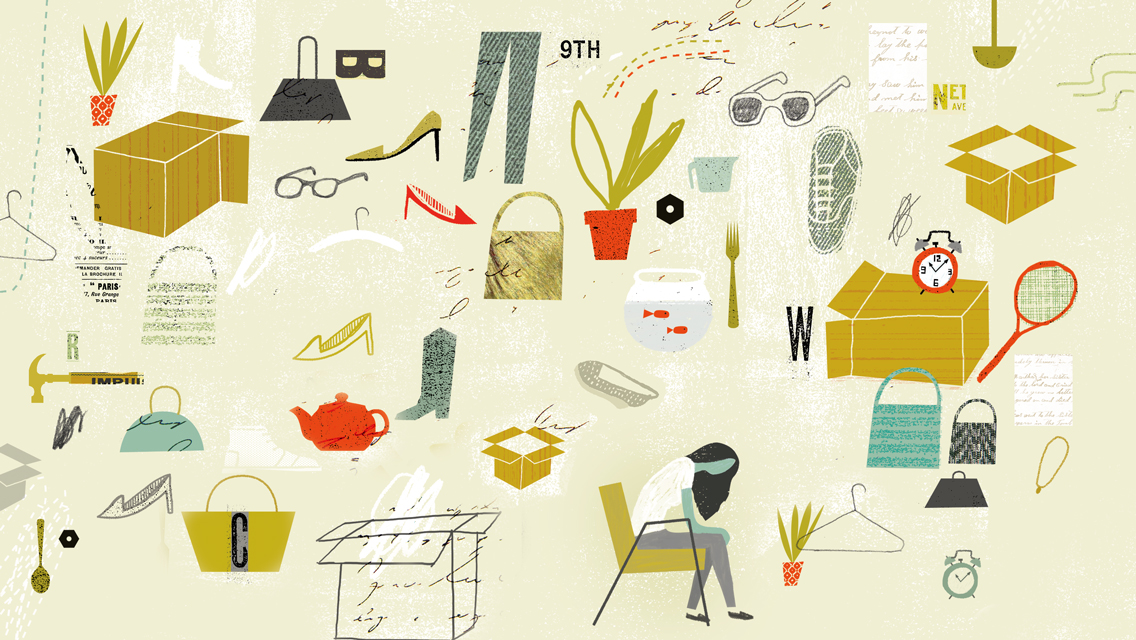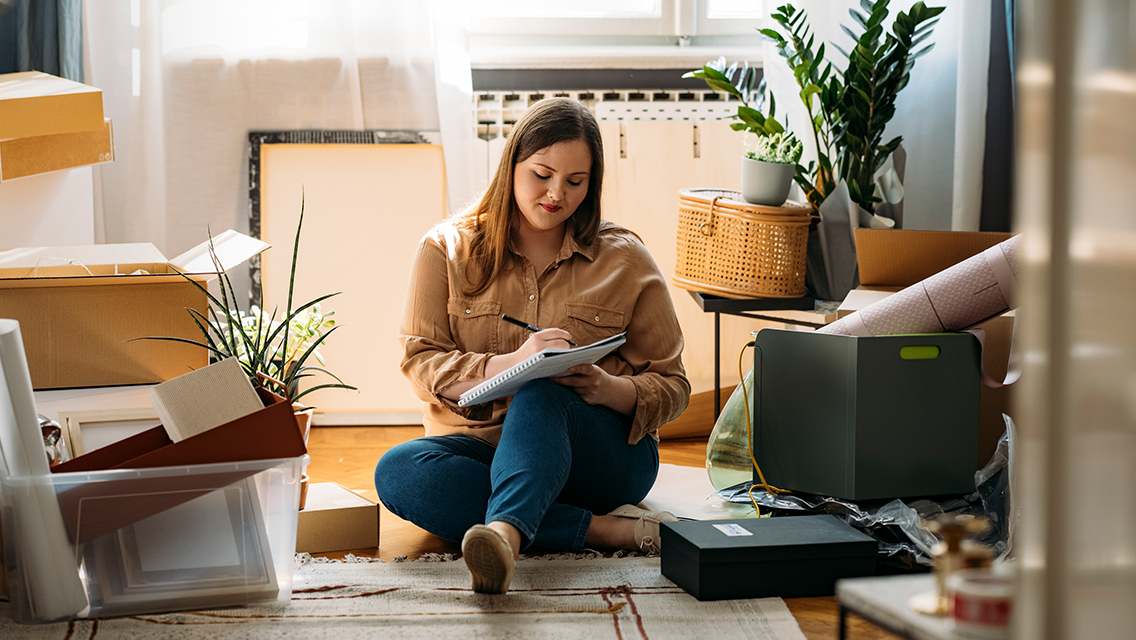Kathy Saso’s desire to save every art project her two young daughters ever created isn’t simply a habit — it’s something of a genetic trait. “As the daughter and granddaughter of women who couldn’t part with anything, I almost always find it difficult to get rid of things,” she admits.
Still, as her kids’ art projects piled up, Saso realized that they were taking up much-needed space and making her feel anxious. Her solution? Take photos of her kids holding up the art, then toss the art itself. This went against her natural instinct, and she worried about her kids’ reaction. “I thought, ‘Poor kids, I’m just going to toss it in the trash.’”
But Saso, 41, an ESL teacher in Delmar, N.Y., found a middle ground: She decided to keep the very best pieces and involve her kids in the decision to let the rest go. “I grabbed my camera and said, ‘Honey, let’s take a picture of you holding the poster and then you’ll always have a memory of it.’”
It worked. Saso cleaned out her stash of kids’ art without hurting any feelings and is now breathing easier. “The fewer things I have,” she says, “the more peaceful I feel.”
It’s tempting to want to save everything attached to a fond memory: kids’ art projects, vacation souvenirs, even family furniture stored in the basement for “someday.” Discarding these items can feel like a betrayal.
But too much memorabilia can create chronic anxiety and keep us from fully engaging with our lives in the present. It also clutters up our attics, basements and living spaces, quite literally consuming the physical space required to make new memories with family and friends.
When Memorabilia Becomes Clutter
There are several ways to determine whether your memorabilia is doing more harm than good, says Julie Morgenstern, author of SHED Your Stuff, Change Your Life. “If it’s taking up so much of your space that it’s too much to enjoy, or you don’t have enough room for your current things, that’s an indicator that your memorabilia has become clutter.”
“Memorabilia becomes clutter when you have items that anchor your energy more in the past than in the present.”
Often we inherit items that a relative was passionate about, but that don’t mesh with our own interests or style. When her grandmother moved to a nursing home last year, Steph Walters and her siblings met one afternoon to divvy up dozens of beautiful cross-stitch projects. Many of the items evoked warm memories, but Walters, 34, a physician in Minneapolis, knew that her home had little space to devote to family heirlooms. Plus, the needlework didn’t work with her style of decorating. So, she selected just a couple of items to keep. “I knew that happy memories could be triggered by one or two of the items just as easily as dozens,” she says.
Still, the mental space that memorabilia occupies can be just as problematic as the physical space it inhabits. “Memorabilia becomes clutter when you have items that anchor your energy more in the past than in the present,” says Karen Kingston, author of Clear Your Clutter with Feng Shui. “If you feel stuck and would like to change, clearing out things that remind you of the past is one of the quickest and most effective ways of moving forward.” (“How to Use Feng Shui to Declutter Your Home — and Your Life” for more.)
Manage Your Memorabilia
Getting rid of sentimental clutter isn’t just about organization. It’s about deciding what’s most important to you and understanding that, while remembering your past may be worthwhile, you also need to create space for the present.
One good way to begin the decluttering process is to minimize the number of similar objects, whether it’s a hundred snapshots of kindergarten graduation or a collection of figurines from Aunt Myrtle. And remember that your goal is to preserve memories, not objects. You don’t have to keep every item connected with a person or event, just the items you like best or that mean the most to you.
“Ask yourself if the item is the best reminder you have of that person or of that period in your life,” says Morgenstern. “If you just keep the best reminders, you’ll shed a lot without eliminating the memory.”
You can ease the sadness of discarding items you once cherished by passing them on to someone who will love them as much as you have.
Extracting the true meaning of a given object may be an important part of this process. For example, some objects might remind you of a trait you liked in yourself in the past, but that you feel you haven’t nurtured in the present. “Maybe you’re working so hard now that you feel that you haven’t had fun since high school, and you’re hanging on to all this stuff to remind you of the fun part of yourself,” explains Morgenstern. With that awareness, you can actively work to build more fun into your life in the present; that will make the “fun” memorabilia easier to part with.
You can ease the sadness of discarding items you once cherished by passing them on to someone who will love them as much as you have. “Give objects a new lease on life with someone who will really use and value them,” advises Kingston. A collection of your grandfather’s tools, for example, might make a perfect housewarming gift for your niece who just bought a starter home.
Get in the Habit
While dedicating a full day to sloughing off years of sentimental clutter can be exhilarating, managing your clutter must be an ongoing process. Steph Walters says she and her kids now spend time once each season trimming their possessions — including the baby clothes, toys and other sentimental stuff that accumulates. “It feels good to get rid of all those things,” she says. “Especially the ones still in good enough shape to pass on to friends or charity.”
While Walters acknowledges that she’s not perfect — she still struggles to part with many of the delightful projects her children create — she tries to keep the focus on what’s most important: watching her kids grow up, not saving every last memento for posterity. “Instead of wishing I had more photos to look at from when my kids were little,” she says, “I tell myself to enjoy what they are doing in the moment.”
Conquer Your Clutter
Here’s how to say goodbye to excess sentimental stuff:
- Be prepared. Schedule a decluttering day for when you’ll have time and energy (rather than spontaneously diving in when you’re fed up with all your stuff). Get plenty of sleep the night before and even consider pre-making lunch and snacks for a big decluttering day. It’s easier to stay focused when you handle the logistics ahead of time.
- Take a two-step approach. First, do a big sweep, separating all sentimental-clutter type items into two sets of marked containers labeled “let go” and “keep.” Enjoy the space you’ve cleared by temporarily clearing everything. A week later, go through your “keep” pile to see if you really still want all the items there. With less stuff cluttering your consciousness, you may find yourself clearer about the things that really need to stay — and go.
- Enlist a friend. Grab a good friend to help with the physical work of packing up boxes. You should make the final decision on every item, but a friend can offer impartial advice.
- Get family to pitch in. Have kids play a role in what they keep and throw, whether it’s their artwork or toys. Consider asking a member of your extended family to serve as a sounding board as you make tough decluttering decisions.
This article originally appeared as “What to Let Go” in the December 2009 issue of Experience Life.




This Post Has 0 Comments